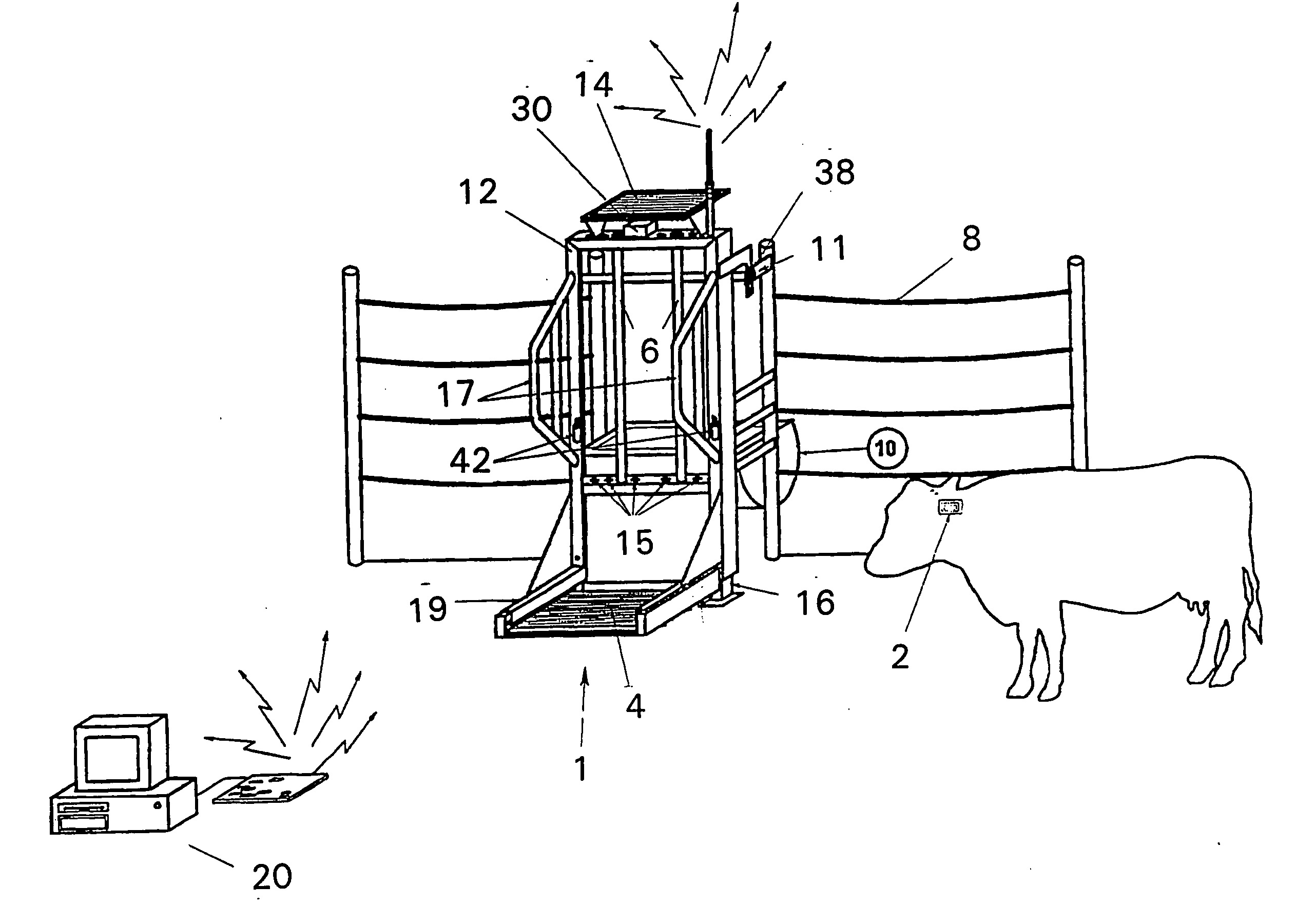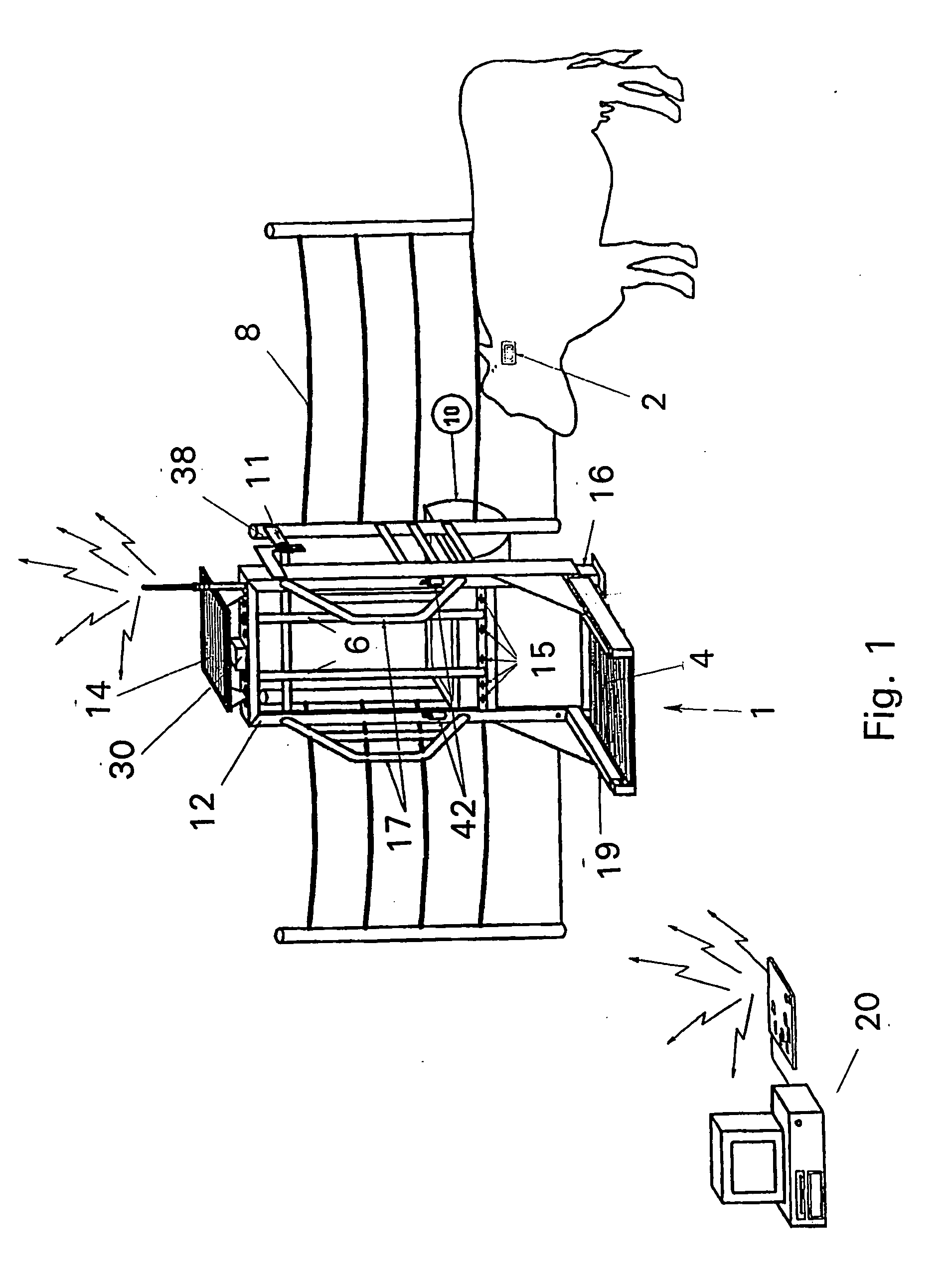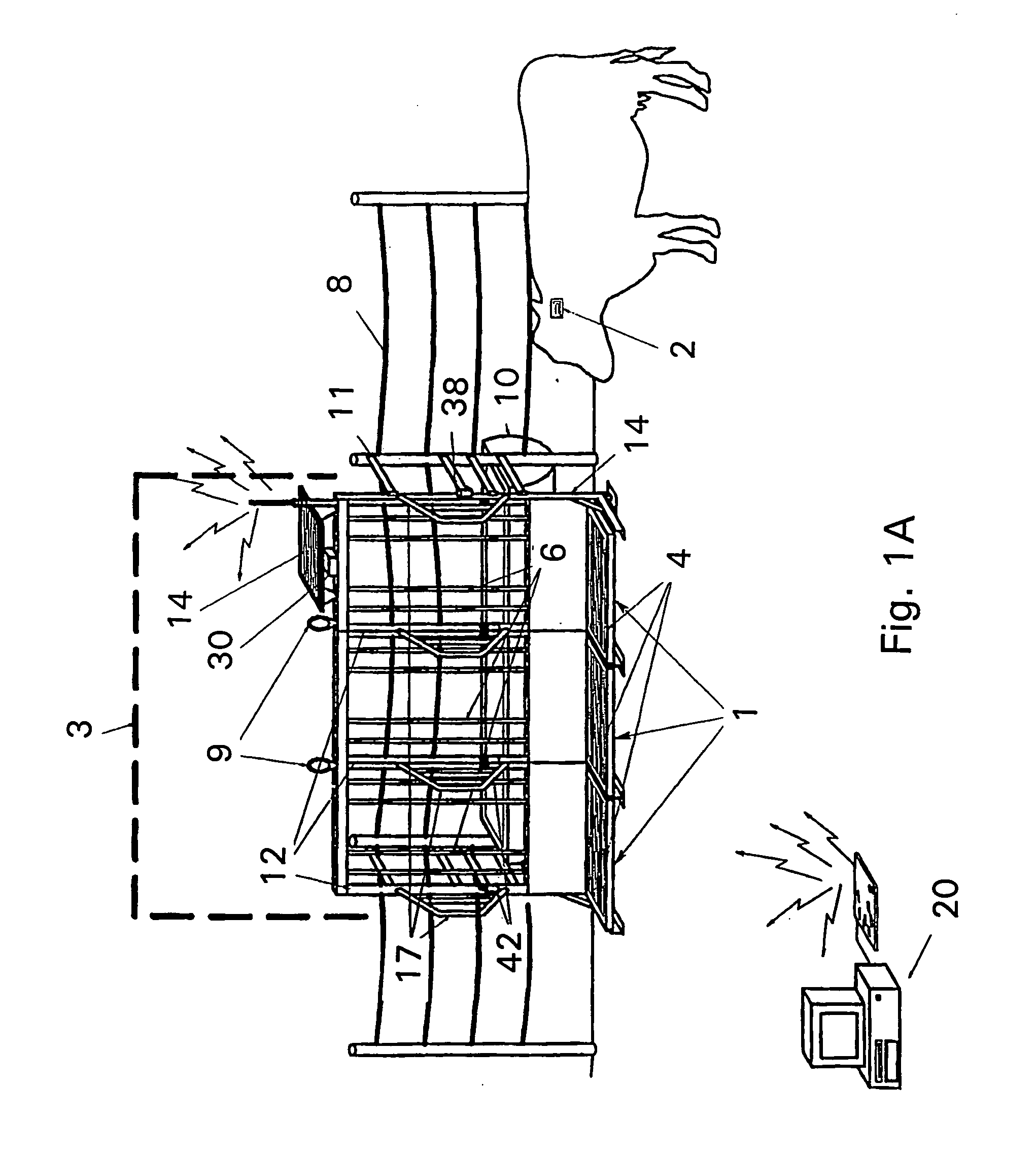Animal management system
a management system and animal technology, applied in the field of animal identification, measurement, monitoring and management systems, can solve the problems of high system cost, inability to readily decipher the individual identification codes of single readers/transmitters, and difficulty in reading multiple transponders using one reader/transmitter
- Summary
- Abstract
- Description
- Claims
- Application Information
AI Technical Summary
Benefits of technology
Problems solved by technology
Method used
Image
Examples
Embodiment Construction
[0019] Turning now to FIG. 1, a brief, general description concerning the various components of the present invention will now be briefly discussed. By way of a general description the present invention individually identifies an animal by using a transmitter (2) generally attached to, injected, implanted or ingested by a particular animal which identifies the individual animal by a unique signal. This transmitter may be of the type distributed by Allflex USA, manufactured by TIRIS, a business unit of Texas Instruments. It is appreciated that a transponder includes the function of a transmitter and, therefore, may be interchangeable therewith in the following embodiments of the invention.
[0020] The invention further comprises a non-confining measurement unit (1) by which it is to be understood that an animal is not physically confined by the structure of the measurement unit (1). The animal is free to come and go at its own will with respect to interaction with the measurement unit...
PUM
 Login to View More
Login to View More Abstract
Description
Claims
Application Information
 Login to View More
Login to View More - R&D
- Intellectual Property
- Life Sciences
- Materials
- Tech Scout
- Unparalleled Data Quality
- Higher Quality Content
- 60% Fewer Hallucinations
Browse by: Latest US Patents, China's latest patents, Technical Efficacy Thesaurus, Application Domain, Technology Topic, Popular Technical Reports.
© 2025 PatSnap. All rights reserved.Legal|Privacy policy|Modern Slavery Act Transparency Statement|Sitemap|About US| Contact US: help@patsnap.com



